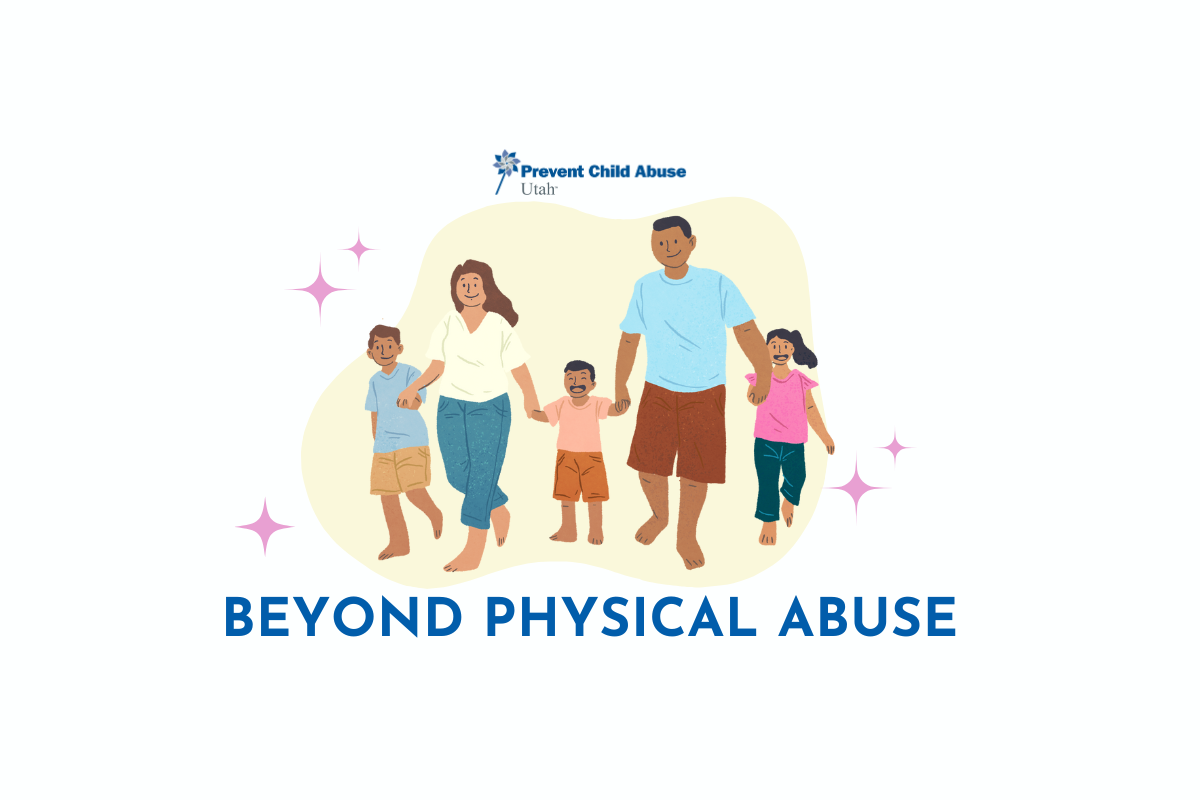
Physical abuse can have profound and lasting negative effects on a child’s physical, emotional, psychological and social well-being. It involves intentional acts of violence, aggression, or harm inflicted on a child by an adult. In simple terms, physical abuse is anything that leaves a long-lasting mark. In Utah, parents are allowed to spank their children for discipline if they choose to. However, the spanking cannot result in a lasting mark on the child’s body. Physical indicators can include bruises, welts, black eyes, bloody noses, or internal injuries such as broken bones. Any kind of consistency or pattern to the marks is a red flag for physical abuse.
Through increased awareness and changes in societal attitudes, rates of physical abuse have declined over the years. Even though this is the case, in 2022, Utah’s Division of Child and Family Services (DCFS) confirmed 969 child victims of physical abuse.
Why does Physical Abuse Happen?
Physical abuse is often triggered by stressors. These stressors may include:
- Stress and Family Dysfunction: High levels of stress, financial difficulties, unemployment, and other family-related challenges can lead to frustration and emotional strain, which might result in abusive behavior.
- History of Abuse: Adults who were themselves victims of physical abuse during childhood may be more likely to perpetrate similar abuse due to a cycle of learned behavior.
- Substance Abuse: Drug and alcohol abuse can impair judgment and self-control, increasing the likelihood of violent behavior towards children.
- Unrealistic Expectations: Sometimes, caregivers may have unrealistic expectations of a child’s behavior, leading to anger and violence when those expectations are not met.
- Lack of Parenting Skills: Inadequate parenting skills and a lack of knowledge about child development and discipline strategies can contribute to the use of inappropriate and harmful disciplinary methods.
While there may be reasons for abuse, there is never a justification. Remember, adults are responsible for their behavior and how they choose to interact with children. It is never a child’s fault when an adult abuses a child. No matter what a child is doing, it is never ok for an adult to hit a child hard enough to leave a lasting mark.
Signs of Physical Abuse:
Kids who experience physical abuse may show signs such as:
- Aggressive Behavior: Some abused children may act out aggressively towards peers, siblings, or authority figures, imitating the violent behavior they have experienced.
- Withdrawal: On the opposite end of the spectrum, children might become excessively withdrawn, displaying fear or reluctance to interact with others.
- Depression and Anxiety: Children who experience physical abuse may develop symptoms of depression and anxiety, such as sadness, mood swings, and excessive worrying.
- Changes in Performance: A sudden decline in academic or extracurricular performance might indicate that a child is struggling emotionally due to abuse.
- Physical Signs: Unexplained bruises, cuts, burns, or other injuries that are inconsistent with accidental explanations could be warning signs of physical abuse.
If you recognize these signs report your suspicions of abuse to Utah’s Child Abuse Hotline at 1-855-323-3237.
Preventing Physical Abuse
Raising children can be hard and sometimes extremely frustrating. Learning to take a quick (or not so quick) time away from your child to calm down and think clearly is a way to make sure a child is never abused in the name of discipline. There are many types of parenting techniques that do not include hitting or abuse of any kind. In fact, research shows that these techniques have better results than spanking. (And spanking can actually lead to more negative behavior). Here are some examples:
- Time-In: Instead of using time-outs as a form of punishment, try using “time-ins.” Spend quiet moments together to discuss the child’s behavior. Help them reflect on what happened and how they can make better choices next time.
- Problem-Solving: Encourage children to be part of the solution when conflicts arise. Discuss the issue together and brainstorm ways to resolve it, helping children develop problem-solving skills.
- Setting Boundaries: Establish clear and consistent boundaries for behavior. Children thrive in environments with predictable routines and limits, which help them feel secure and understand what’s expected of them.
- Teaching Self-Regulation: Teach children healthy ways to manage their emotions and impulses. Breathing exercises, counting to ten, or taking a short break can help children calm down and make better decisions.
- Distraction and Diversion: When dealing with younger children, distract them from negative behaviors by engaging them in a new and interesting activity.
More than anything, be patient with your child. Remember that learning and growth take time. Be realistic in your expectations of your child and their behavior. If you feel like you need help in learning parenting tools or better ways to discipline; reach out to our Parents as Teacher (PAT) Program. They have wonderful teachers waiting to help your family grow together in love.
